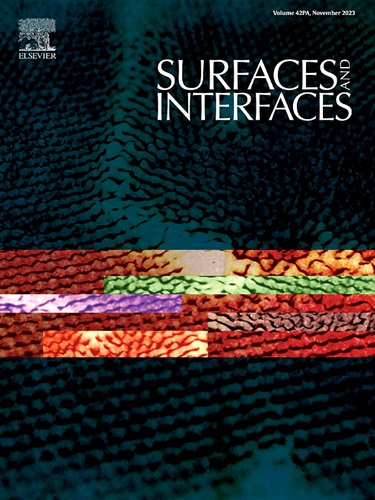Mechanism of transformation of ion-selectivity of pyrrhotite by hypervalent anion (SO42−) and its effect on corrosion behavior
IF 5.7
2区 材料科学
Q2 CHEMISTRY, PHYSICAL
引用次数: 0
Abstract
The corrosion behavior of P110 steel in H2S environments was investigated, revealing that the ion-selectivity of the corrosion products significantly influences corrosion behavior. At 60°C and 90°C, the corrosion products formed on P110 steel in the NaCl solutions and the NaCl+Na2SO4 solutions were cation-selective mackinawite, which provided good protection for the metal substrate, resulting in low corrosion rates and uniform corrosion. However, at 120°C, 160°C, and 205°C, the corrosion products formed in the NaCl solutions were anion-selective pyrrhotite, which failed to protect the metal substrate effectively, leading to high corrosion rates and pitting corrosion. In contrast, in the NaCl+Na2SO4 solutions, the cation-selective pyrrhotite exhibited excellent protective performance, significantly reducing the corrosion rate and preventing pitting corrosion. By calculating the surface energy of Cl− and SO42− adsorption on the (001) plane of pyrrhotite, it was found that SO42− adsorption changed the exposed atoms on the (001) plane from Fe to S, transforming pyrrhotite from anion-selective to cation-selective. Additionally, the morphology of pyrrhotite crystals evolved from elongated hexagon to regular hexagon. According to the Gibbs-Wulff theorem, by simulating the Wulff structure of pyrrhotite crystals, the relationship between crystal morphology and surface energy was established. The law of crystal morphology evolution of pyrrhotite was revealed.
求助全文
约1分钟内获得全文
求助全文
来源期刊

Surfaces and Interfaces
Chemistry-General Chemistry
CiteScore
8.50
自引率
6.50%
发文量
753
审稿时长
35 days
期刊介绍:
The aim of the journal is to provide a respectful outlet for ''sound science'' papers in all research areas on surfaces and interfaces. We define sound science papers as papers that describe new and well-executed research, but that do not necessarily provide brand new insights or are merely a description of research results.
Surfaces and Interfaces publishes research papers in all fields of surface science which may not always find the right home on first submission to our Elsevier sister journals (Applied Surface, Surface and Coatings Technology, Thin Solid Films)
 求助内容:
求助内容: 应助结果提醒方式:
应助结果提醒方式:


